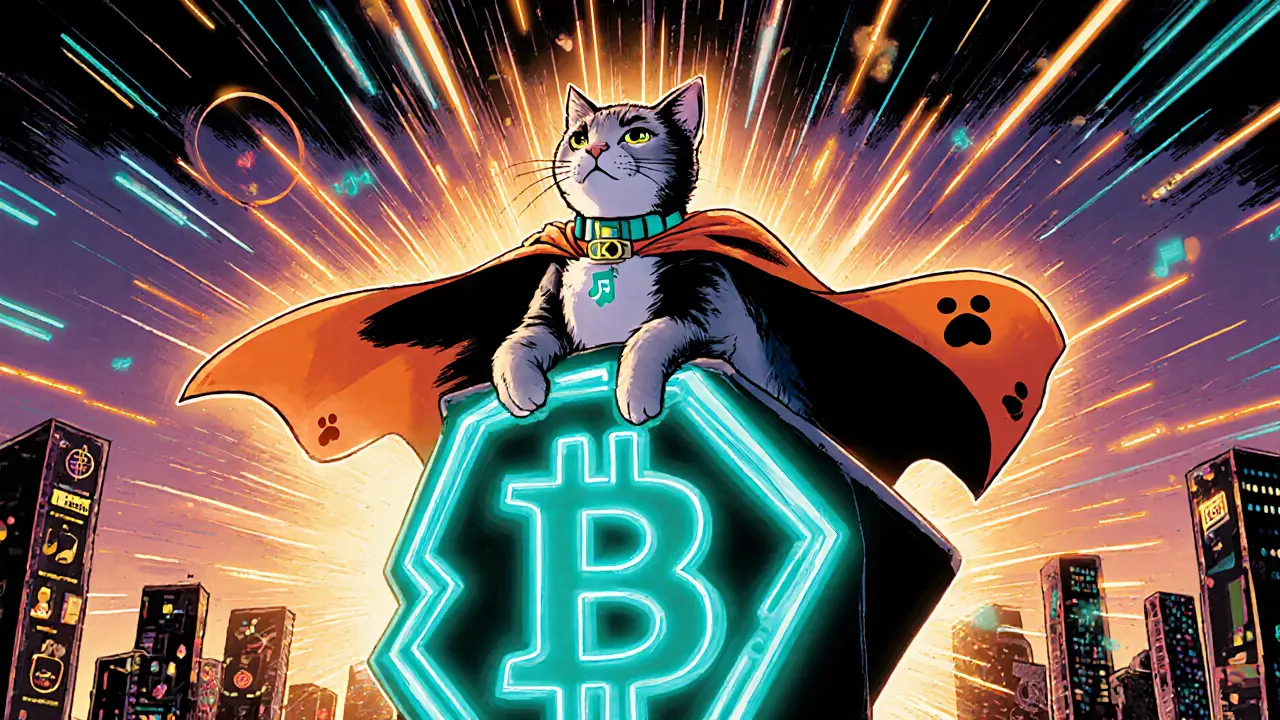When working with BENJI token, a utility token built on a modular blockchain that aims to simplify cross‑chain payments. Also known as BENJI, it offers staking rewards, governance rights, and low‑fee transfers. The token’s airdrop program has attracted many early adopters, while its market cap provides a snapshot of overall demand and liquidity. Finally, listing on a decentralized exchange (DEX) is crucial for real‑time trading and price discovery. Together, these pieces form the ecosystem that investors need to understand before diving in.
First, let’s break down the token’s core attributes. BENJI’s tokenomics allocate 40% to community rewards, 30% to liquidity pools, 20% to development, and the remaining 10% to strategic partners. This split aims to balance growth with stability, making the token attractive for both holders and traders. Because the token runs on a modular blockchain, the execution layer can scale independently from consensus, which translates to faster transaction finality—a clear advantage when you’re swapping on a DEX during volatile market moves.
Another piece of the puzzle is the airdrop mechanism. The BENJI airdrop targets users who have previously interacted with the platform’s sister projects, rewarding them with a fixed amount of tokens per qualifying wallet. Eligibility is verified on‑chain, which reduces fraud and ensures a fair distribution. Participants often see an immediate boost in market cap as fresh tokens hit the market, creating short‑term price spikes that savvy traders can capitalize on. However, the influx also raises the importance of liquidity depth on DEXs; thin order books can cause slippage, so monitoring pool health is essential.
Market cap isn’t just a headline number—it reflects the token’s total value in circulation and can signal its maturity. A rising cap typically indicates growing adoption, while a sudden drop may point to sell‑pressure or a failed airdrop rollout. By comparing BENJI’s cap to benchmarks like Bitcoin’s or major DeFi tokens, you can gauge relative risk. For example, BENJI’s cap sits at roughly $80 million, placing it in the mid‑cap range where price swings are more pronounced than large‑cap assets but still backed by solid on‑chain activity.
Trading on a decentralized exchange adds another layer of strategy. Because DEXs rely on automated market makers (AMMs), price is set by the ratio of tokens in the pool rather than an order book. This means that adding liquidity can earn you a share of transaction fees, turning you into a passive income source. On the flip side, impermanent loss can erode returns if the token’s price moves sharply. Understanding how the BENJI/ETH or BENJI/USDC pairs behave under different market conditions helps you decide whether to provide liquidity, trade, or hold.
The articles in this collection cover everything from modular blockchain architecture—showing why BENJI can scale efficiently—to step‑by‑step guides on joining the airdrop, calculating market cap, and evaluating DEX liquidity. You’ll also find deep dives into tokenomics, security considerations, and real‑world use cases. Use these resources to build a holistic view of the BENJI token before you make any moves.
Ready to explore the details? Scroll down to see practical guides, expert analyses, and actionable tips that will help you navigate BENJI’s ecosystem with confidence.

An in‑depth look at BENJI, the Taylor Swift cat meme token on Solana-its specs, price history, liquidity, legal risks, and how to trade it safely.